Osteoarthritis is a group of diseases that arise for a variety of reasons, but are similar in clinical manifestations and course. At the heart of all arthrosis is the defeat of joint components. Osteoarthritis is a progressive disease with impaired function of the affected joints. Arthrosis of the knee joint (gonarthrosis) is a disease in which the cartilage, synovial membranes, ligaments, periarticular muscles of the knee joint are damaged. Arthrosis of the knee joint, a treatment that requires an integrated approach, also needs your attention. And also at least a basic understanding of why and how the disease progresses.
Gonarthrosis: causes
Causes of knee joint arthrosis can be:
- Joint injuries: According to the scientific literature, about one-third, and possibly half of arthrosis cases are preceded by trauma. A person can stumble on the road accidentally, or damage a joint while playing sports. First, there will be acute pain, which will then become dull and become a little sore, but not cause much discomfort. Usually, in most cases, the joint will heal on its own and will show no signs of injury. But in rare cases, this unfavorable coincidental condition can provoke the development of arthrosis.
- Long -term joint excess: It is believed that people whose profession is associated with prolonged excessive stress on the joints (professional athletes, postmen) may face the development of early joint arthrosis.
- Inflammation of the joints (arthritis of the knee joint): with inflammation of the joints, biological and morphological changes occur, blood flow is disrupted, therefore, it is this arthritis that causes arthrosis of the knee joint (secondary arthrosis).
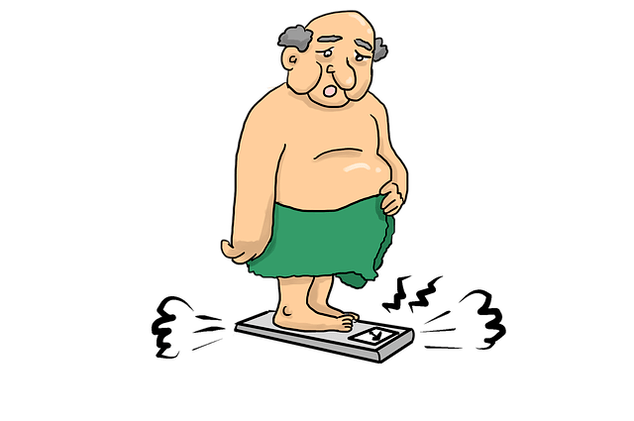
Additional risk factors
- Descendants. Usually, joint arthrosis is not inherited directly, but the "catalyst" in the development of arthrosis can be a peculiarity of metabolism, the structure of cartilage tissue, which is only genetically transmitted. Also, the possibility of arthrosis can occur if a person has a joint abnormality or underdeveloped, birth trauma.
- Overweight. Being overweight is a "worsening" condition in the development of arthrosis: that is, it is not directly related, but weight gain has a significant burden. It should be noted that in obese people, arthrosis of the knee joint is more severe than others.
- Chronic stress. It is a well -known fact that in case of excessive experience, the adrenal glands release "stress hormones", because in them there is a deterioration of blood supply and decreased production of hyaluronic acid, which is an important component of normal joint function. As a result of chronic stress and the above aggravating conditions, arthrosis can occur.
Symptoms of gonarthrosis
- It hurts. One of the early and main symptoms of knee joint arthrosis is pain in the knee joint. It should be noted that knee pain will occur only during physical exercise: when walking, running, squatting, and in the lying position, this pain will disappear, and after some time it will disappear completely (until the next load).
- Cracks in the joints. In contrast to the "cracking" of a healthy person’s joints, a joint fracture affected by arthrosis has a different tone: it’s rough and "dry".
- Joint stiffness. Grade 1 knee joint arthrosis is usually not expressed by the same stiffness as the next degree. But as progress progresses, the distance of movement at the affected joint decreases significantly.
- Damage to the knee joint. With the development of gonarthrosis, a pathological formation develops in the joint spine. Therefore, the appearance of a joint can be different from the appearance of a healthy joint. In addition, the appearance of the joint can be "large", this is due to excessive accumulation of intra-articular fluid (synovitis).
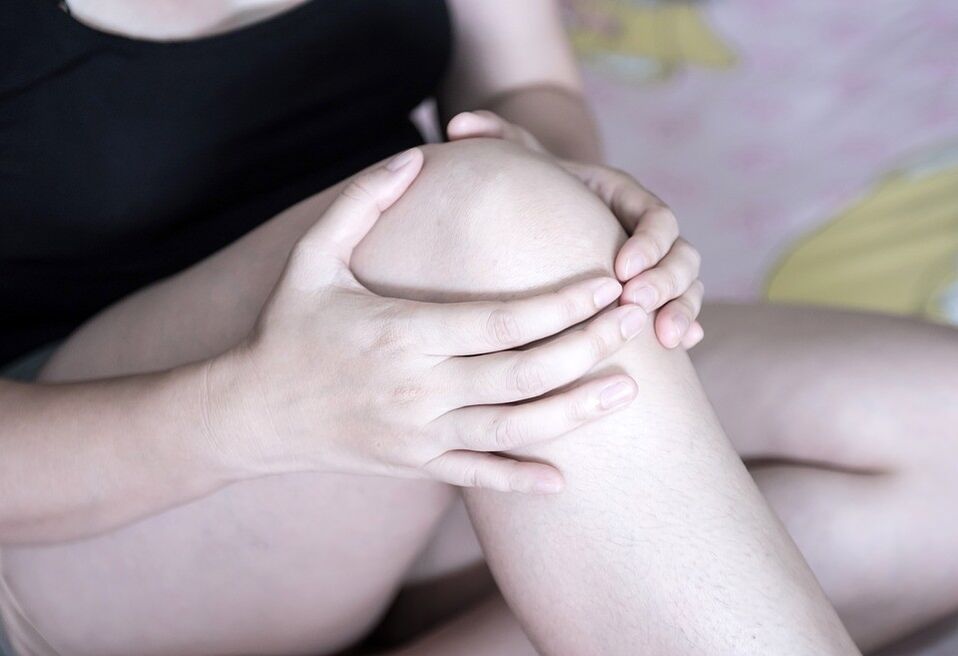
The course of arthrosis of the knee joint
Osteoarthritis of the knee most often strikes women than men. The disease often persists after forty, but sometimes it occurs earlier, usually after injury and in professional athletes. More complex and more severe gonarthrosis occurs, as we wrote earlier, in obese women, as well as in people with severe varicose veins.
The onset of the disease is characterized by the appearance of mild knee pain. Often, pain occurs when a person has to stand on their feet for a long time, while going down and up stairs. When a person lies down, the pain goes away, but when you have to stand up, the first step becomes very painful for him.
There are three degrees of arthrosis of the knee joint
Arthrosis of the knee joint 1 degree
Grade 1 knee joint arthrosis is characterized by occasional intense pain in the knee, but at the same time, the bones that make up the knee joint remain unchanged, but because of synovitis, the knee may appear slightly swollen. If there is too much intra-articular fluid, it can spread to the popliteal fossa. This condition is called Baker cyst. If you have been diagnosed with such a diagnosis, you do not have to worry, this is not an oncological neoplasm, it is reduced under the influence of drugs prescribed by a doctor.
Degree 2 knee joint arthrosis
Grade 2 knee joint arthrosis begins 2-3 months after the onset of the disease. During this time, knee pain is usually worse. This pain no longer occurs only during physical exercise, but accompanies a person with any movement. Usually at this time different cramps in the knee "merge" with pain in the joints. Gron 2 gonarthrosis of the knee joint, in addition to intense pain and cramping, is accompanied by a decrease in the ability to bend the leg at the knee joint. Joint deformation immediately manifests itself: the bone structure changes shape, and when touched, the joint becomes hard and "rough".
Grade 3 knee arthrosis
Grade 3 knee joint arthrosis is characterized by constant pain, even difficult for a person to be in a prone position: he has to find a position where he can rest. The knees become sensitive to changes in weather, the pain begins towards night. Gron 3 gonarthrosis of the knee joint is accompanied by a final decrease in movement, making it impossible for a person to bend the leg at the knee joint more than 90 °. Sometimes, with grade 3 gonarthrosis, it is not possible to straighten the leg completely, one has to walk with the leg slightly bent. In some cases, the foot deformity develops in an O -shaped or X -shaped shape. In extreme cases, treatment of high arthrosis should be performed.
Knee gonarthrosis: treatment. What is important to know when treating the knee with medication
While there are many advertisements promising magic ointments for joint pain, you need to understand that it is impossible to cure gonarthrosis with one method, an integrated approach is needed.
If there are the first signs of arthrosis in you, you need to see a doctor as soon as possible. This may be an arthrologist, rheumatologist, orthopedist, or, first, a general practitioner.
Knee arthrosis: NSAID treatment
So how to treat knee joint arthrosis? Usually, for the treatment of joints, non-steroidal (non-hormonal) substances are used that can relieve the inflammatory process in the joints. Knee gonarthrosis is treated with drugs that can have antipyretic, analgesic effects. Remember, drugs in this group should not be taken all the time. they can "hide" the symptoms of the disease. Please note: do not self -medicate, act only under the guidance of a competent specialist who can provide treatment for you, based on the individual parameters of your body, taking into account the contraindications to the use of the drug.
In recent years, a new generation of drugs have been used in practice: they are selective agents that act in the same way as NSAIDs, but more rarely give unpleasant side effects and do not cause complications.
Knee arthrosis: treatment with chondroprotectors
With arthrosis of the knee joint, you can take a substance that nourishes the cartilage tissue of the joint and restores its structure. These drugs are chondroprotectors. Such medications are most effective if you have class 1 knee joint gonarthrosis, because with extreme gonarthrosis almost nothing can be cured: all the cartilage is practically destroyed. To get the effect of chondroprotectors, it is necessary to use them for a long time: at least 2-3 courses of treatment, which usually takes one and a half years. Remember, although there are a few contraindications to this group of medicinal substances, their use should be agreed with your doctor.
Knee arthrosis: treatment with vasodilators
Vasodilator drugs are a good complex therapy in the treatment of arthrosis. They help restore joints by increasing blood flow and relieving small vessel spasms. A pleasant bonus in the treatment of knee joint arthrosis, including vasodilator medications, is the elimination of night pain in the damaged joint. If you want to achieve maximum therapeutic effect, vasodilators are best used with chondroprotectors, so that the nutrients of chondroprotectors will permeate into the joints in greater amounts and will circulate more actively in them. Remember, the use of any medication must be coordinated with your doctor.
Knee arthrosis: medicated ointments and creams
Healing ointments for arthrosis are often used as a trap by marketers for desperate patients. Remember that treatment with ointment of arthrosis of the knee joint at an extreme level will not have an effect, but in the early stages, creams and ointments can significantly reduce the condition. Painkillers can be used to improve circulation to the joints. Such drugs help relieve painful cramps in the joints, improve blood circulation. You can also use ointments based on bee and snake venom. This ointment has an irritating effect that increases blood circulation to damaged joints. Remember, many ointments based on toxins can cause allergic reactions, so only a specialist should give permission for their use.
Therapeutic exercises for knee joint arthrosis
Therapeutic physical culture for knee joint arthrosis is an effective method of treatment in combination with medication and physiotherapy.
You must remember that restorative gymnastics for gonarthrosis is the main method of treatment, because we can not strengthen the muscles and blood vessels of the knee joint, and activate the blood supply with any medication. In addition, rehabilitation gymnastics is the cheapest and most effective treatment that does not require unnecessary material expenditure.
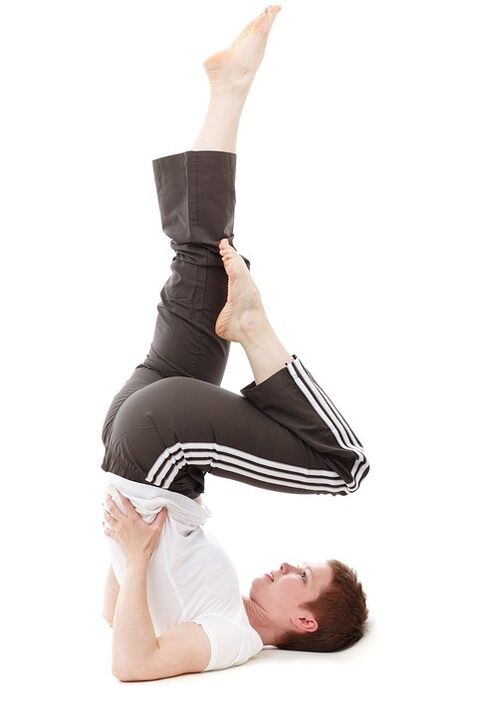
But it is necessary to do a complex of exercise therapy for arthrosis on purpose: do not rush to do 200 squats a day or 100 kicks. If you are not providing a strong dynamic load, instead of active bending expansion, do static exercises. Unfortunately, most patients do not like to do static exercises, because they are the most energy consuming and tiring, but if you can last for 2-3 weeks, exercise regularly, you will not only improve the condition of the knee joint, but also find an increase in strength andperformance improvement.
How to do it right
The exercises must be done very smoothly and gently, stretching the ligaments and joints with light pressure. Do not allow severe pain during exercise. Aim gradually and systematically, do not rush: the expected effect will only be obtained with continuous modest effort.
Remember that strength training should not be used for the first time after surgery on the abdominal and chest organs, with fever, a critical day in women. It is very important to pay attention not only to the joints, but also to put pressure on the muscles of the abdomen and buttocks. This is needed so that through the abdominal and back muscles the main blood flow to the limbs runs.
The training complex is available for free on the Internet, try to do various exercises for 30-40 minutes a day, every day, according to our instructions.
We wish you perseverance and willingness to restore your ease of movement!
Physiotherapy for arthrosis of the knee joint
If you ask whether it is possible to use physiotherapeutic treatment methods for arthrosis of the knee joint, we will answer - for sure!
Knee arthrosis: treatment - laser therapy
Laser therapy is the use of light beams for therapeutic purposes, which consists of a spectrum of ultraviolet, infrared, red rays. The laser effect has anti-inflammatory, decongestant and analgesic effects. Typically, a laser therapy course consists of 15 sessions. Laser therapy is a relatively safe method of treatment, but it is impossible to cure arthrosis with one laser, this is an additional treatment method.
Knee arthrosis: treatment - cryotherapy
Cryotherapy is a local cooling effect on the joints. There are two methods of cryotherapy: using a cryosauna and applying liquid nitrogen directly to the joints. It is believed that the latter method is the most effective for arthrosis of the knee joint. With the help of cryotherapy, it can increase blood supply to the joints, improve metabolic processes, and relieve muscle spasms. The course of treatment is usually 10-12 sessions daily.
Knee arthrosis: treatment - magnetotherapy
Magnetotherapy - exposure to magnetic fields. A relatively common method of physiotherapy treatment in hospitals and clinics. Exposure to magnetic fields has an anti-edematous effect, causes non-contact electrical muscle stimulation, and reduces inflammation in the joints. The course of treatment is prescribed by a doctor - physiotherapist.
Knee arthrosis: treatment - ultrasound therapy
Ultrasound therapy - treatment with sound waves. Ultrasound for arthrosis helps increase blood supply, reduces muscle spasms, and has analgesic effects. To enhance the effect of ultrasound therapy, medications are applied to the affected joints. With the help of ultrasonic waves, the drug penetrates the tissue more easily.
Knee arthrosis: heat treatment
Heat treatment for arthrosis of the knee joint is used at 1-2 stages of the disease. This method includes treatment with ozokerite, paraffin, mud. It is the latter that gets special attention: the treatment of mud arthrosis can be done at home. You need to dilute the healing mud with water and heat it to a temperature of 60 °, then mix the resulting mass with unheated mud, cool it to 38-42 ° and apply a layer 2-3 cm thick on the affected joints. Cover the mixture with an oil cloth and a warm blanket. Leave on for 30 minutes. Perform the procedure daily with 10-10 procedures.
Diet and herbal remedies for knee joint arthrosis
Diet for arthrosis is an important factor in successful treatment. But we must understand that the development of arthrosis is not associated with dietary peculiarities, but excess weight that contributes to the occurrence of arthrosis in the lower extremities. Even so, you need to lose weight properly: there is no need to starve or do a hard diet, because, as you know, after leaving a hard diet, weight gain again, and, often, in greater amounts.
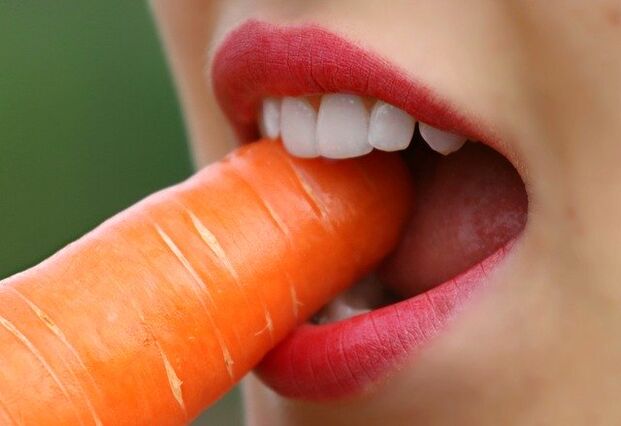
We need to know that being overweight is also a disease, but it can and should be overcome. With obesity, the central rules of appetite and satiety are disrupted, but it is possible to "guide them to the right path. "
First, you need to be aware that there are problems that are often associated with bad eating habits. Second, you need to learn to set realistic goals for yourself. Weight loss of 10-15% from the beginning is an excellent result. Believe me, even if you lose weight even 5% of the original, you will immediately feel relieved: there will be a decrease in blood pressure, and the condition of the joints will improve.
The goal is to lose weight
However, if you have set a goal to lose weight, then you should reconsider your diet, composition and amount of food you eat. Cut out sugary candies, toast, and all sorts of "quick" carbs.
For starters, we recommend trying a simple way of eating food. Prepare your regular diet by placing your regular meals on a plate. Now, eat only half of the food on your plate. You will soon realize that you are only eating a large portion of the habit, even if you need a little to satisfy your hunger. Even if you are hungry, slowly eat half your portion and rest for 10 minutes. You will be surprised that after this time you do not want to finish the rest of the portion: hunger disappears, and thus a panicked desire to eat it all. After two months of "lack of diet" you will see significant results. Try it!
Along with proper food intake, one cannot forget about adequate fluid intake. People who do not have severe cardiovascular disease and kidney disease, as well as those who do not suffer from edema, can safely increase the amount of fluid they drink to 2 liters a day.
Alternative treatment of knee joint arthrosis
Herbal remedies for arthrosis. It is important to note that infusions and decoctions for arthrosis help weaker than the above methods, but can provide relative benefits.
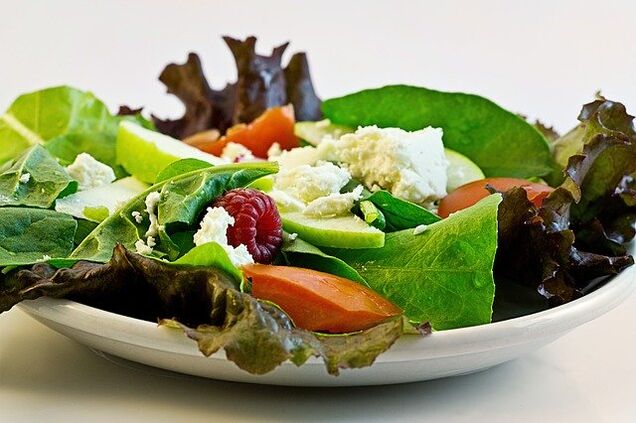
For a month, you can use one of the following infusions:
remember, you only need to take each infusion or decoction separately, then replace it with another. Don't drink all at once!
Decoction of birch for arthrosis
Decoction of birch for arthrosis: 1 tablespoon of birch buds must be poured a glass of boiling water, boil the mixture on low heat for 15 minutes, and leave for 1 hour, cover the container with warmth. After an hour, you need to strain and add the broth with boiled water to the original volume. Take a quarter (1/4) cup infusion 4 times a day, one hour after meals for a month.
Linden infusion for arthrosis
Linden infusion for arthrosis: 3 teaspoons of linden flowers should be poured with a glass of boiling water, boiled on low heat for 15 minutes, then cooled and filtered. Take a warm infusion of 1 glass 3 times a day after meals for 3 weeks.
Decoction of Burdock for arthrosis
Decoction of burdock for arthrosis: 1 tablespoon of burdock root should be poured with 1 cup of boiling water, simmer for about 30 minutes, stirring constantly, after which the broth should be cooled to room temperature and filtered. Take warm broth in half (1/2) cup 3 times a day before meals for a month.
Old infusion for arthrosis
Alder infusion for arthrosis: 2 tablespoons of gray alder cones (Alnus incana) must be poured with 1 glass of boiling water, kept on low heat for 15 minutes, then cooled and filtered. Take a third infusion (1/3) of alder 3 times a day for half an hour before meals for a month.
Collection of medicinal ingredients for arthrosis
Collection of medicinal ingredients for arthrosis: mix in equal parts willow bark, parsley root, black elderberry flowers and nettle leaves, cut carefully. Pour 4 tablespoons of the mixture with 1 liter of boiling water and boil on low heat for 5-10 minutes, then leave for 2 hours and drain. Take this collection in half a glass 4 times a day for half an hour before meals. The course of treatment is 1 month.
In conclusion
Although arthrosis is a very unpleasant disease, when faced with it, it is necessary to draw accurate conclusions from the disease, reduce negative emotions, start fighting for full physical and spiritual health, by adhering to the recommendations we have put forward. Then you will definitely beat this disease!






























